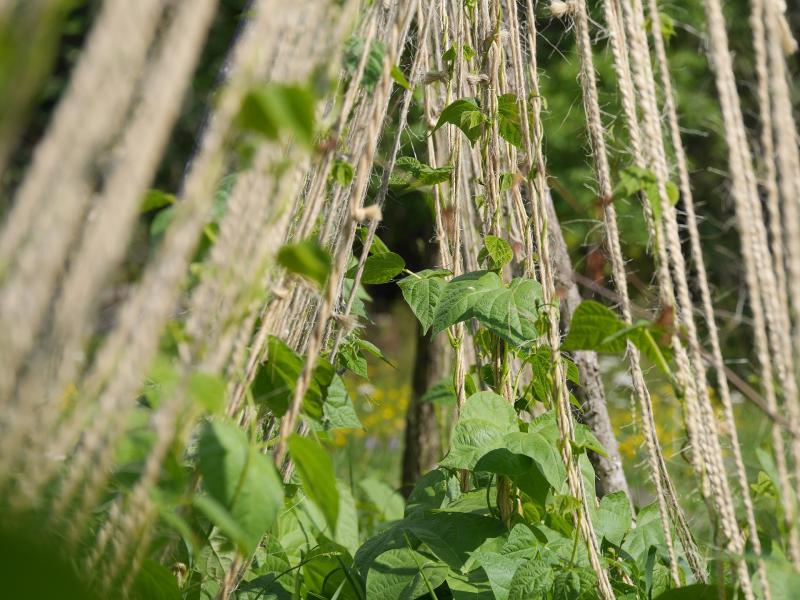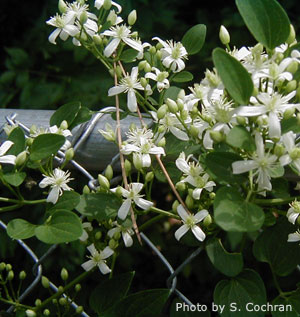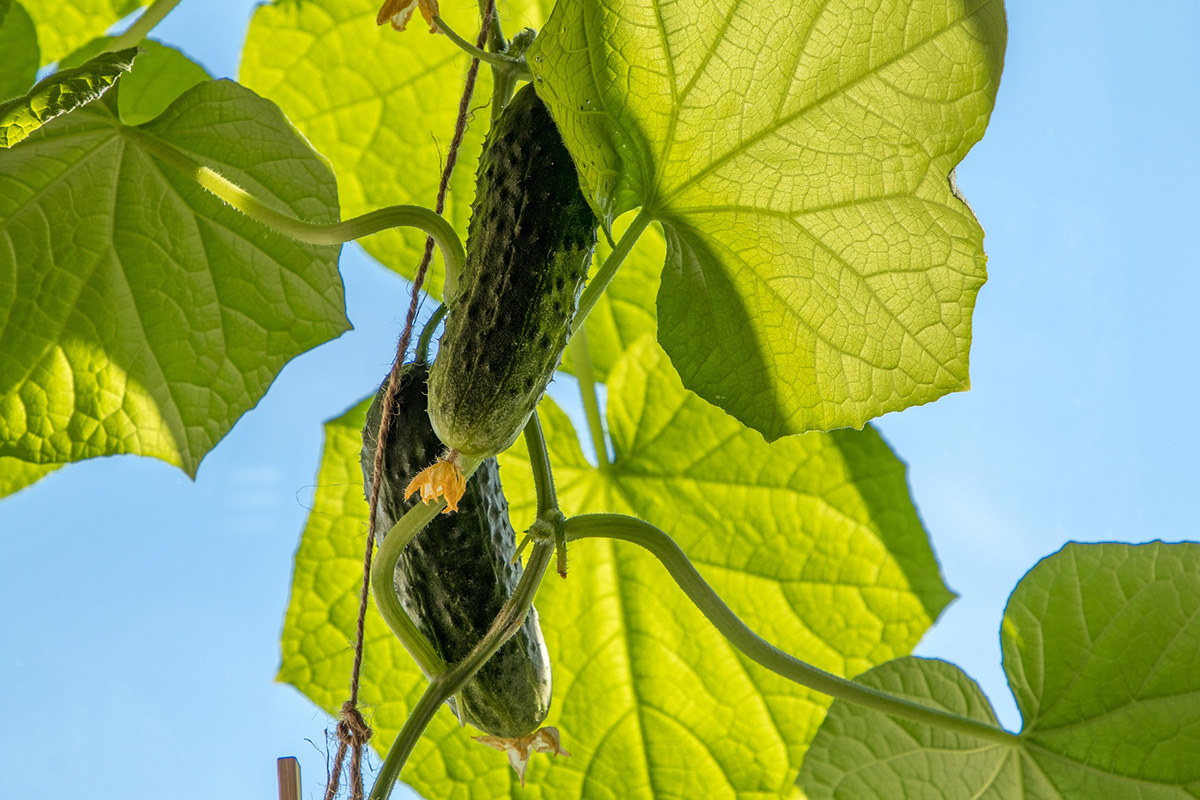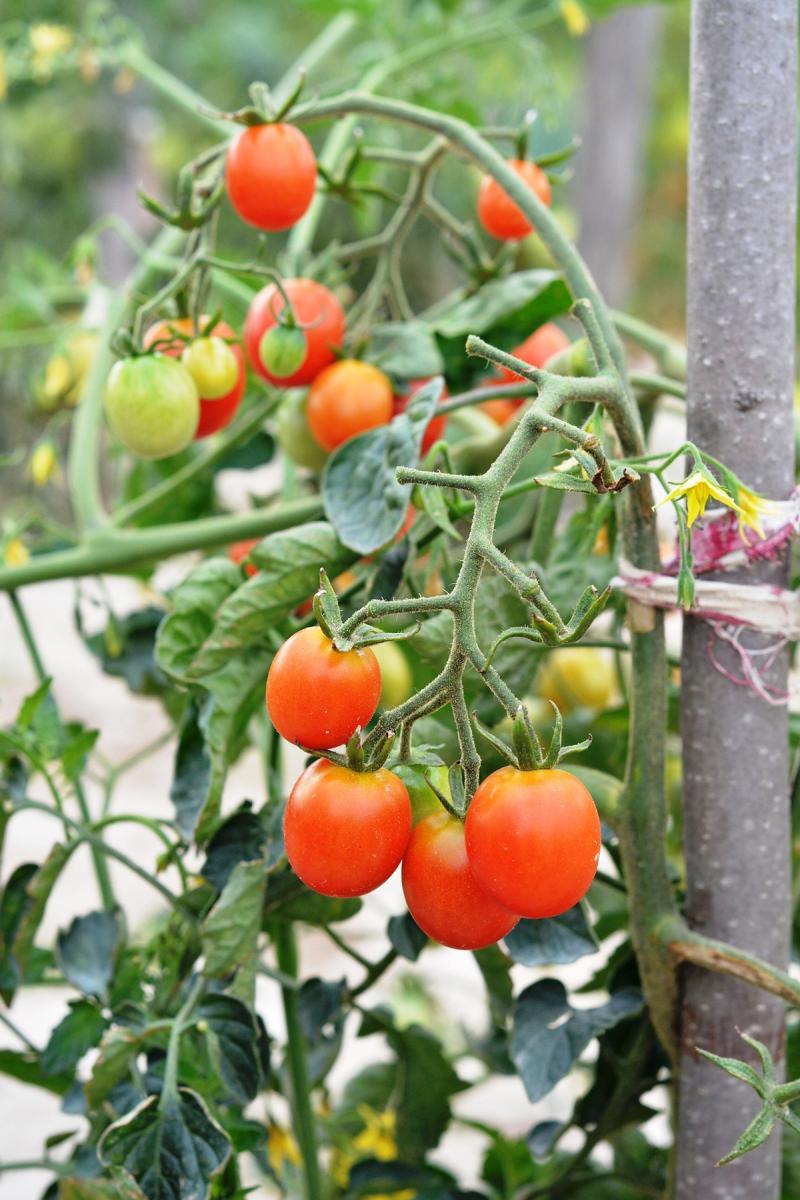
 Vertical gardening, or trellising, is a great technique to make the most of a small garden plot, and provides many benefits.
Vertical gardening, or trellising, is a great technique to make the most of a small garden plot, and provides many benefits.
Getting plants up off the ground can reduce disease problems, by allowing better air circulation through the foliage, and makes inspecting for insect problems easier.
Bringing plants up to eye-level allows for easy harvesting, and let's you enjoy the beauty of your plants more easily than when they are growing along the ground.
Upright plants can function as a small windbreak for smaller plants, protecting them from the scouring effects of wind.
And finally, vertically garden structures add interest in the garden and can be used to disguise less attractive garden components, like a compost pile.
Creating Vertical Garden Structures
Many types of structures can be used or created for vertical gardening. An unattractive fence can become the support for pole beans or peas. A blank wall on the house can be fitted with wooden slatted trellis or wires to provide support. A garden arch or arbor can support cucumbers or gourds. Teepees or tripods can be easily constructed out of bamboo canes, pvc pipe, wooden stakes or any other decorative type of pole. Wire cages can be purchased to encourage upright growth of tomatoes, or homemade cages can be made out of concrete reinforcing wire.
 Choose a support structure that will be strong enough to hold up the plants when they are fully matured and loaded with fruits. Plants can be remarkable heavy at this stage, especially melons and tomatoes, so make sure the trellising will be able to hold them. Beans and peas require the lightest amount of support.
Choose a support structure that will be strong enough to hold up the plants when they are fully matured and loaded with fruits. Plants can be remarkable heavy at this stage, especially melons and tomatoes, so make sure the trellising will be able to hold them. Beans and peas require the lightest amount of support.
Some plants, like peas and beans, will twine themselves up the supports. Other plants, like tomatoes or watermelon, will need to be tied. Plants with large fruits, such as muskmelon or icebox watermelon, also need extra support for each fruit. Slings made from old nylons, or any length of old cloth that can be tied to the trellis, will work.
 Choosing Plants
Choosing Plants
When selecting plants to grow on vertical structures, be sure to purchase plants with a vining growth habit, not bush types. Green beans are available in both bush and pole varieties, so double check the plant tag to find vining plants. Common pole beans that would well in a vertical garden include 'Kentucky Blue', 'Kentucky Wonder', and 'Stringless Blue Lake'. Look for garden pea cultivars, including 'Little Marvel', 'Lincoln' and 'Wando'.
 Indeterminate tomato cultivars, often called vining tomatoes, would be best for use with a trellis or pole system, while determinate bush tomatoes can be held up off the ground with wire cages. Look for indeterminate cultivars such as 'Early Girl', 'Big Beef' or 'Brandywine'. Bush-type tomatoes include 'Bush Celebrity', 'Health Kick', or 'Roma'. For more ideas on choosing vegetable cultivars for your garden, take a look at the following publications.
Indeterminate tomato cultivars, often called vining tomatoes, would be best for use with a trellis or pole system, while determinate bush tomatoes can be held up off the ground with wire cages. Look for indeterminate cultivars such as 'Early Girl', 'Big Beef' or 'Brandywine'. Bush-type tomatoes include 'Bush Celebrity', 'Health Kick', or 'Roma'. For more ideas on choosing vegetable cultivars for your garden, take a look at the following publications.
Finally, consider growing shade tolerant plants in the lee of vertical garden elements. Lettuce, spinach and other greens are good candidates.
Images by Pixabay.com.